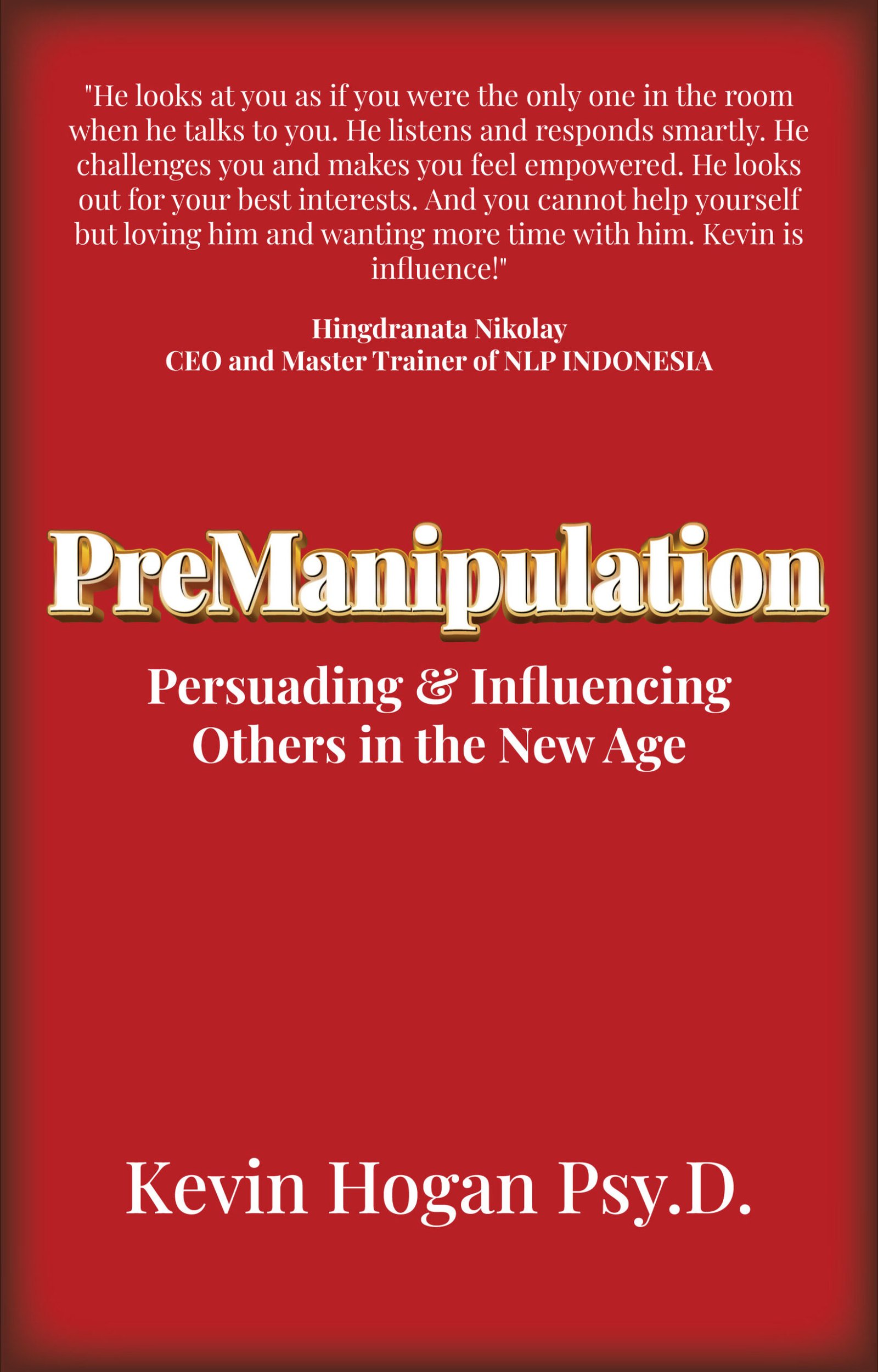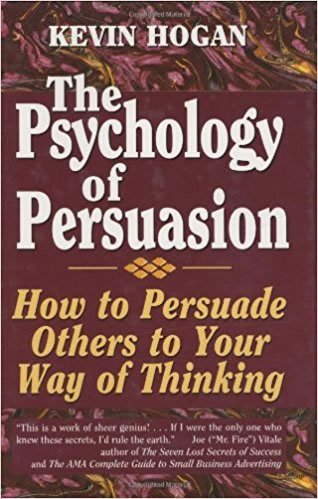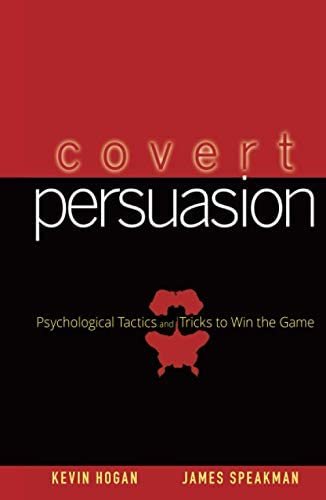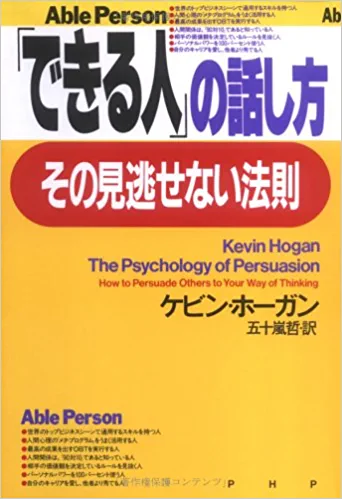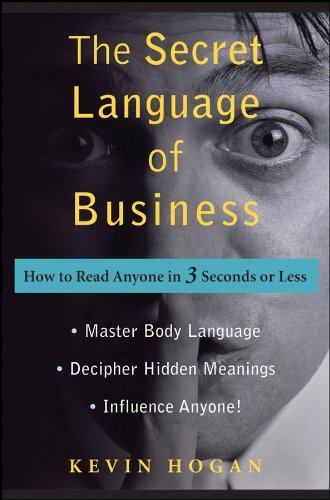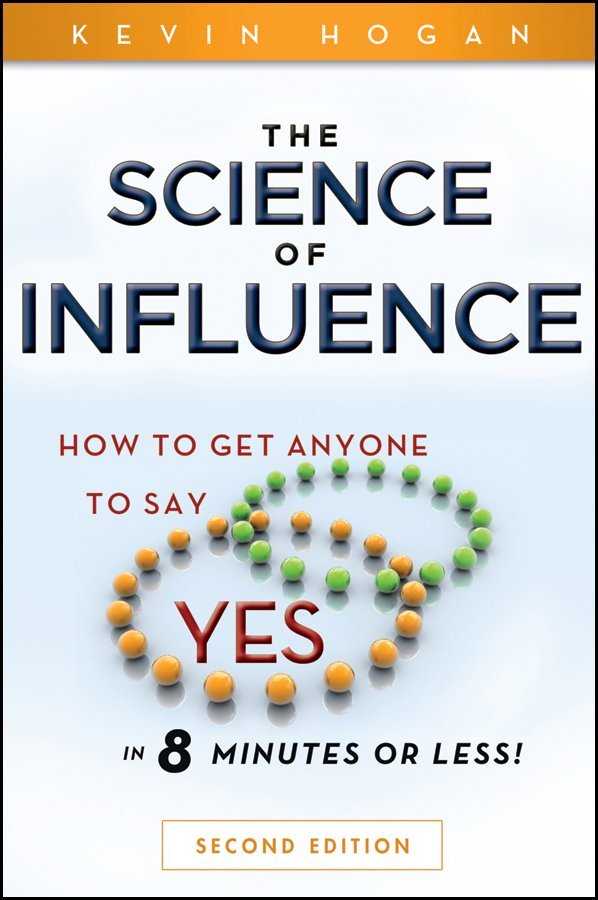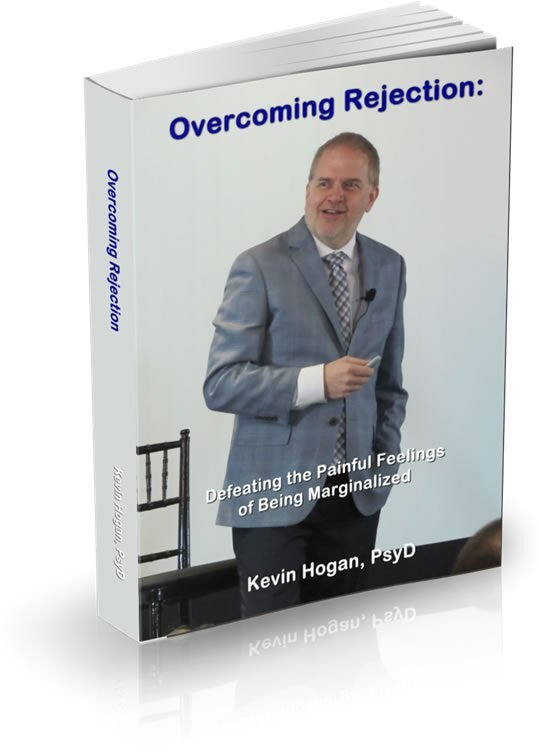7 Persuasion Myths that actually CAUSE Her to Say “No”
Myth 1. Always Be Closing

Abject stupidity.
This might be among the worst advice you could get in life. Oscillation occurs at every moment of the persuasion process. The pendulum NEVER stops swinging. That means one second they are “buying” or wanting to do business with you, and the next, they are saying “no.” It might sound like mental illness but it is true with all psychologically stable people.
Because people are constantly swinging from “yes” to “no” or “how can I make this work” to “no way can I do this,” it’s important to recognize these shifts moment by moment or perhaps a few times per minute. Watch body language changes, facial expression shifts and specific phrasing of words in particularly.
When people start nodding their head as a person drones on a lot of the chatty talkers believe they are closer to yes. And they are wrong. This is the first sign to CHANGE your APPROACH and ASK QUESTIONS. When the other person is talking, they ARE RIGHT. Ask questions that require the person to think, share and have an opinion. This allows the person to be on a track they feel certain and familiar with.
Other signs that you are talking for too long include moving from a loose standing posture to folding arms or hands in the pockets. These are not “no” signals per se, but they do signal a bit of discomfort which is not leading to “yes.”
“Can you think of someone cut your lawn that did a great job at a reasonable price?”
GIVE THEM TIME TO PROCESS AND ANSWER WITH A REAL YES.
“If I could do that would you hire me?”
This is very difficult to say “no” to and the other person in essence has sold YOU.
People who are “always closing” whether in personal relationships or business are on a highway to hades. It’s going to crash and burn and it doesn’t take long.
Important: Oscillation is 100% normal. Expect it. It’s human nature and in no way indicates YOU are doing anything WRONG!
Remember to check with me at live events and ask me the latest effective methods to gauge oscillation and more importantly how to stop the pendulum for swinging once it is positioned where you want it.
Myth 2. Close the Deal in Your Office

If you’re a mortgage broker or sell automobiles, you have to close in your office. Go for it. Sometimes you simply have to.
Remember the last time you went into to the auto dealers office?
A lot of people just leave. It’s like being in hell. And for people like me who hate being inside of small closed places sitting away from the door… well, we walk a lot faster.
If you don’t have to “close the deal” in your office, don’t.
Whenever you do or say anything that seems to endanger the status quo, you will push the flight-fight button. When people are IN their comfort zone they will be easiest to work with. When you ask them to leave their comfort zone you have put them in fight or flight mode. Most persuasive attempts require moving someone out of their comfort zone but when you do this follow these two rules.
A. Keep people’s stay outside of their comfort zone SHORT. Allowing someone to feel uncomfortable or psychic pain is just fine. Really. It’s necessary for change.
B. When someone IS out of their comfort zone whether you took them there or they are simply there because of the situation, remember to bring them safely back to their comfort zone or into a new safer, more secure place.
Do EVERYTHING you can to keep people IN their comfort zone until you have that moment where you must allow the person to feel the pain of the status quo. Once the person really gets what the pain of stasis is you can heal the wound that has been felt.
We all have our world in which we are familiar with everything. You might hate it all or just some of it, but it IS FAMILIAR. Talking to someone in THEIR WORLD is where you must begin your dialogue.
This one really hurts…
Myth 3. Don’t Mention Your Product/Your Own Weaknesses
This lie is not only  bad advice it’s deadly when trying to get to “yes.”
bad advice it’s deadly when trying to get to “yes.”
You’re going to find that touching on a weakness you or whatever you sell is, is one of the most powerful rapport and credibility building tactics there is.
I suck at Chemistry.
I suck at Biology.
I suck at English.
I suck at Keeping Up with the Joneses.
I don’t get a lot of things that everyone else in the world seems to get.
Now, who is going to feel threatened? Who is going to have resistance to a message (so long as it is not about these things) at this point?
Most people make this mistake. You and I both know from our personal experience…that if you blow this…you blow the entire thing.
It’s very important to either make weaknesses a true advantage (“Sure it only has 4 slots for cards and flash drives but that is why it’s a thousand bucks cheaper…”) if true, or simply own the weakness.
Taking your client into the future TWICE with your product/you is very important.
One image/visual/movie has to be imperfect. Things are OK but there might be a few days where having those 4 inputs just isn’t great.
The other image/visual/movie has to be a more clear, real and image they can take home and convince their rolodex in their mind that they have done well.
If you don’t let your client experience both “yes” and “no” (or imperfect) futures, they will create the “no” (imperfect) future for you and cement it in their mind.
Resolve the anticipated regret now so you don’t have to deal with it when tomorrow arrives. Never paint a bed of roses picture for the other person. They know it isn’t true before the words leave the mouth.
Paint accurate pictures with defects and flaws. Reality breeds trust and rapport.
Trust is the mental and emotional shortcut to agreement and connection.
Myth 4. Don’t Let them Say Something Negative about You/Your Product

“Kevin sometimes you sound really arrogant.”
AGREE
“True story. Most people who are pretty confident come across as comfortable in a lot of settings including those times when they aren’t that competent can look a lot like arrogance.”
(I’ve gotten this one before!)
It’s OK. It HAS to be OK or people to have complex (multiple) opinions about you. As soon as people have complex opinions they are far more strongly connected to you.
“The audio on that live event you did wasn’t very good.”
“No. It sucked. Drove me nuts. Thankfully if we get the right information we win, even if the audio was bad.”
(I had that one before too.)
There is ONE thing you don’t want them to say, and that is, “I don’t want you/your product.”
It takes an intelligent and strong person to do a 180 after publicly verbalizing they don’t want you/your services. Don’t elicit or lead people to comment on whether they want you or your product UNTIL you are ready for “yes.”
It’s fine and “healthy” for them to verbalize something negative about you or your product if you haven’t already done so.
Once negatives are on the table and dealt with they typically become impotent.
Let (ENCOURAGE) your client ask questions so the client can verbalize concerns and possible negative futures.
Encouraging questions brings the client to a state of mind that says, “This is safe, secure, comfortable.” When the client verbalizes a possible future in the form of a question, they are far less likely to push their own fight/flight button than if YOU verbalize their possible futures.
Myth 5. Keep the Pressure On

Sigh…
High pressure salespeople.
I get tired just thinking about them.
“This meeting is costing me a lot of money. You need to decide today.”
“If you don’t do this right now, you have screwed up big time.”
“Do you really need to ask your wife/husband/accountant/puppy?”
BOOM
Paradoxical reaction.
The potential client/customer wants anything INSTEAD OF what the person is selling. And that is how it is with everything in communicating about change.
LEGEND POINT: When you push Idea X (whatever it is), you threaten to take away other choices, even if they have no idea what they are, and thereby cause the person to want to hold onto ANYTHING BUT X to the degree of distance where X is compared to where they are now.
What’s that mean?
A person with 500,000 life insurance policy won’t have much difficulty in seeing the value in having 750,000. Having someone move from NO life insurance to being insured (even at a very minimal level) on the other hand is a huge jump for someone. If you suggest changing all of their “business” to you and your company, assume an instant paradoxical reaction and loss of the change… or deal.
What do you do?
Allow the person to test you and test run your company, service or product. Don’t ask them to commit long term. Long term is ALWAYS a bad feeling for them and they will simply say “no.”
If what your product or service does for them is worth a darn, you don’t need to pressure sell it this moment. (Yes, of course you should for a dozen good reasons but if you NEED this deal or sale, you will lose it. Why? YOU are sending off the taste and smell of fear.)
Another “Yes” Erasers?
Myth 6. Smile!

I guessed that would get your attention.
A genuine smile is gold. Every other smile however is a sign of desperation.
Never force the smile. Let it happen naturally or not at all.
The only person who puts the fake smile on is the 8 year old getting their school pictures taken or someone who has been compelled to smile …or else.
And at the unconscious level that all translates to desperation.
And desperation translates to disaster.
 Think: Your client is the girl. You are the guy.
Think: Your client is the girl. You are the guy.
(Just imagine…. if this doesn’t quite fit your scenario…)
Does the girl want to go out with the guy who is desperate, looks desperate, needs the date so bad that it looks like he can’t get any other date?
Desperation is the ONLY significant cause of high pressure selling. No one wants to do business or be with a desperate person. They operate from a fear base. And fear is contagious…it feels bad…people RUN from fear and the desperate person.
With a few exceptions, NO ONE should do business with a high pressure salesperson or high pressure anything BECAUSE the person IS desperate. Desperation leads people to bad judgement and bad decisions and this is one of the few intuitions that IS well documented.
Here’s the thing: If at any time you need the date, the deal, the client, the business, the sale more than the client does, you are not acting in their best interest and you create a lose/lose.
How do you escape desperation?
Be the best, sell the best, validate the fact that you are the best.
Then you will know that they will say “yes” and even if they don’t, most of the others will. Desperation disappears.
No one wants to deal with pressure. You don’t. I don’t. It stinks. The trigger was the fake smile, the pushiness. The solution is be real.
Myth 7. Don’t Be Cocky
Another surprise?
Current research shows that confidence and “cockiness” influence.
Cockiness (overconfidence) can be a sign of ignorance and lack of awareness.
It can also be a manifestation that appears to be more intense than it actually is.
The solution is personal mastery. People want to deal with those who have control of themselves.
That person IS going to appear confident, and frankly, cocky, on occasion.
Self-confidence and self discipline are contagious. The self-confident person has a very strong sense of enthusiasm. The word enthusiasm comes from the Greek term meaning “God within”. If you had God within you, wouldn’t you feel strong, certain, safe and secure? Here’s why. When you are confident and certain that you are doing that which is right, that knowledge comes from history. In the past, you’ve done 10,000 things before, 8,000 of them worked, 2,000 of them didn’t, and, therefore, you know you have the odds in your favor. And you have taken along with you the knowledge from those experiences. If something starts to go wrong, you just fix it.
That attitude, that set of beliefs and values at first startles people because it can be overwhelming and then, like love, it envelops people and they realize that you have it together – that, meaning personal mastery.
You are not arrogant when you believe that your way is the best way. But, you feel that your way is probably the best way today. You are always willing to change and improve midstream at any point. Have a plan, work the plan, be willing (and in fact expect to) change midstream with the feedback that comes to you. People who can do that are self-confident.
Myth 8. Tell Stories

First of all, this is the best advice on the planet. Tell a few well constructed SHORT stories in your conversation.
But.. If you tell lots of stories and metaphors or try to dazzle me with your…anything, expect me, your client, to react NEGATIVELY.
Yep…too much of a good thing…
My friend Devin Hastings uses a signature in his email communication. “Be careful what you say to yourself. You’re listening.” And indeed, that IS how we learn. We hear ourselves talk to ourselves. We talk ourselves into things and out of things. Most importantly…we believe what we say…even when we are ambivalent and filled with uncertainty.
KEY POINT: Effective WELL-DESIGNED stories are crucial to success in persuasion. TOO MANY stories told at the wrong time is a disaster happening…
Myth 9. Propose Your Point of View as THE Solution

When someone proposes ANY point of view, we automatically find the opposing point of view IF we are ambivalent about the issue. And obviously, we almost certainly are. (In fact you can NOT create change if you don’t first have ambivalence!) Therefore, let the client do ALL the talking.
The person’s nonconscious mind automatically uses your position/point of view as the voice inside of them that argues for the proposal. They then generate the opposite side. If you push or argue, they will react identically with equal or greater force.
If that sounds like a law of physics…now you see just how significant this is…
Change happens because we PERCEIVE that we are at point A and that we could be at point B. If we PERCEIVE that B is good, or dislike A, we are ripe for change….eventually. Maybe today. Maybe not. That will depend on client comfort and questions.
Reality principle: You can believe or even factually know and be able to prove that you know what is right for your customer or client. But if you present it in a fashion that will exclude ANY other options…considered or not, your position will become the target of reactance, and you will get precisely what you do NOT want.
Myth 10. Keep Sharing Your Message Until You Get to “Yes.”
Ask Until: Good advice.
Repeat Your Message Until They Say Yes: Bad Advice
Like all myths, there is a logic to this one. Yes repetition of message matters to the unfamiliar, to the new, to the potentially receptive. But to someone who already has an opinion, you’ll need a lot more than repeating the same thing over and over again.
There is a tiny slice of the population that will say “yes” after you have beaten them down.
But the fact is that most people come to “yes” quickly, if they are going to get there at all.
And remember persistence is important. But if the green button doesn’t work, continue by pressing the yellow button and then the green button and sometimes that is the real answer!
Skeptics (whether scientists/thinkers or true believers) need to be convinced quickly. They become more rigid and hostile to your message as minutes go by. And the vast majority of the population are skeptics of new messages. Either they think rationally or hold strong beliefs about truth in their status quo. These people all come to “no” as your message increases in duration. One reason this occurs is the longer you speak the more likely you are to hit one of their “Say No Triggers.”
Once you upset someone, turn them off, offend them, hurt them, blow it getting them back is all but futile.
This means you MUST talk less, say fewer words and listen a lot more skillfully.
Most of what you verbalize is about 1/2 second ahead of your conscious awareness of what you are actually saying.
You should read this as “SCARY!”
In simple terms the emotional brain is pumping feelings into the rest of your brain that are immediately being articulated in your language of choice. Unfortunately the top part of your brain doesn’t catch up with your mouth until after it has said words.
This is the biggest reason they tell you, “no.”
You were more concerned about a complete message than you were about reactance, resistance, identification, rapport and all the factors that really matter in persuasion. Your brain is running on instinct. Reptile + Emotion = A mess around every corner.
It all comes down to this:
People talk and talk and talk and talk and then say something they regret and then talk and talk and talk some more.
What about you?
In any conversation you can utter 10 brilliant ideas and make just one insensitive blunder.
To the emotional brain in her head, it won’t matter.
You don’t win 10 – 1.
People don’t process information that way.
Blunders aren’t offset. Blunders are highlighted and put in NEON.
You lose.
Believe it or not, this is a fairly easy habit to change.
Begin to ask gentle, simple, questions instead of talking.
The master of influence uses FEW words regardless of their profession. The question is HOW MANY words should YOU use?
The Talk to Listen Word Ratio: 1:4
If you talk more than 20% of the time, it will be very tough for you to persuade them to your way of thinking.
Every good communicator, therapist, salesperson, negotiator, any person of influence, verbally says a minimal amount of laser targeted information. Verbal influence is about asking questions and helping people come to conclusions on their own
…with a little nudge every now and then… from you!
Most people have been taught that selling and persuasion are about endlessly spewing streams of words until a switch trips in the prospects mind.
They think the girl will say ‘yes’ if they simply talk enough …to drive her insane… and of course this is why salespeople have their streaks of bad luck.”
However, using the 1:4 Talk to Listen Word Ratio, where the other person ends up communicating about 80% of the time is a fundamental on which all other persuasion rests. As you become more skilled at asking questions and listening you will speak far less than 20% of a conversation.
Ask more questions, make fewer statements. You’ll hear “yes” a lot more often.
And that brings us to The Persuasion Code.
What is The Persuasion Code?
Persuasion is most effective when it happens interactively.
- You ask questions.
- The client gives you their answers.
- They ask you if you can give them what they want/need.
- You ask if you give it to them will they use it/enjoy it.
- They say “yes!”…
- …and you…concur.

